Mini Honeycomb Scarf
Our Mini Honeycomb Scarf takes a cue from nature’s most extraordinary engineers, busy little bees, of course, and transforms their genius into a beautiful, lofty, waffle-y swath of fabric, far from the sticky buzz of its inspiration.

A classic knit consisting of a delicate 2-stitch cable pattern, this honeycomb texture is not difficult to create, but it does appear wonderfully intricate and very how-did-you-do-that!
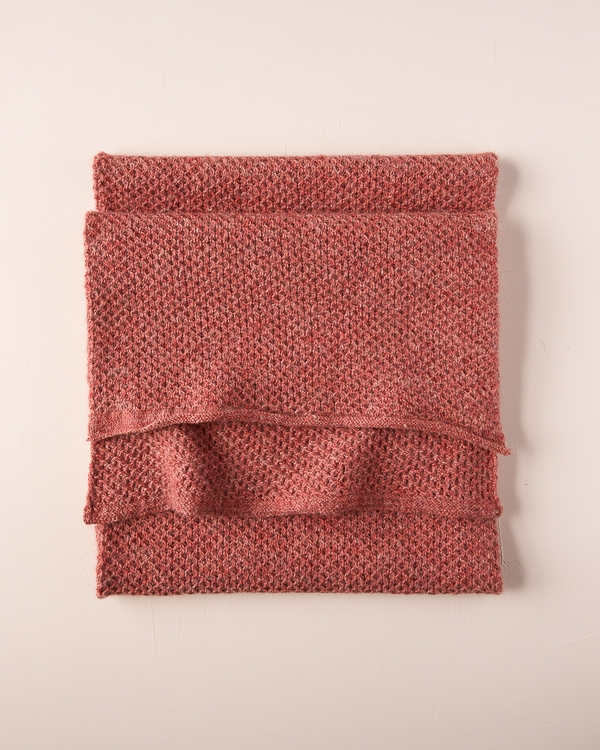
Three skeins of our traditional Linen Quill are all you need to create this heirloom piece. We used the color Lychee Pink, which just glows with warmth and sweetness, but there are 30 other colors to choose from, each of which would knit up into its own gorgeous version of a Mini Honeycomb Scarf. So pick your favorite, and get as busy as a bee!
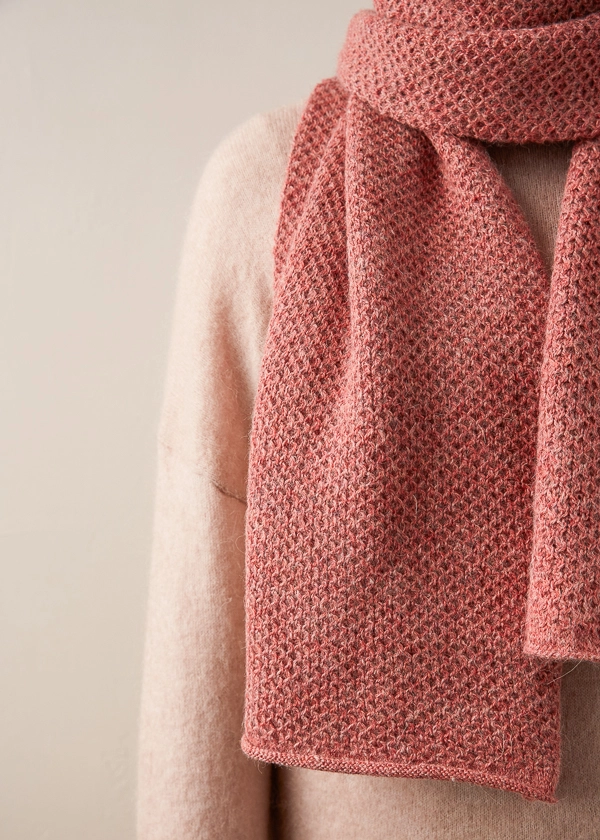
Designed by Purl Soho designer, Laura Ferguson.
Share your progress and connect with the community by tagging your pics with #PurlSoho, #PurlSohoBusyHands, #PurlSohoMiniHoneycombScarf, and #PurlSohoLinenQuill. We can’t wait to see what you make!
MATERIALS
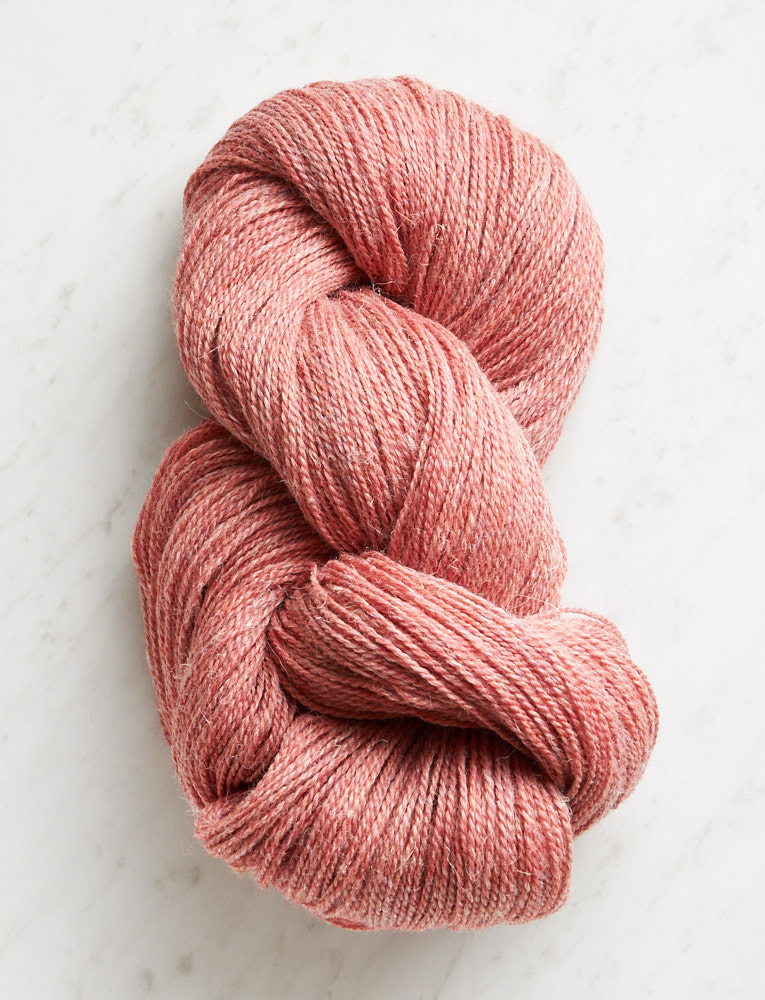
- 3 skeins of Purl Soho’s Linen Quill, 50% fine highland wool, 35% alpaca, and 15% linen. Each skein is 439 yards/ 100 grams; approximately 1317 yards required. This color is Lychee Pink.
- US 1 (2.5 mm) circular or straight needles
- US 3 (3.25 mm) circular or straight needles
- A cable stitch holder
GAUGE
40 stitches and 48 rows = 4 inches in stockinette stitch on smaller needle
40 stitches and 40 rows = 4 inches in stitch pattern on larger needle
SIZE
Finished Dimensions: 13 inches wide x 67 inches long
NOTES
ABBREVIATIONS
C2F: Slip 1 stitch to cable stitch holder and hold in front of work, k1, then k1 from cable stitch holder.
C2B: Slip 1 stitch to cable stitch holder and hold in back of work, k1, then k1 from cable stitch holder.
Our Cable Tutorial shows you the basic steps of working a cable. The cable in the tutorial requires you to slip 3 stitches instead of 1, but the concept is the same!
NOTE: Because Linen Quill is not a slippery yarn, you may find that you can forego the cable stitch holder and just let the stitch hang free, in front or in back of the work as required, while you knit the following stitch. Once you’ve knit the following stitch, just go back and return the hanging stitch to the left needle, without twisting it, and knit it from there.
STITCH MULTIPLE
This pattern is worked over a multiple of 4 stitches plus 2.
PATTERN
BEGIN IN STOCKINETTE STITCH
Use a basic Long Tail Cast On to cast 130 stitches onto smaller needles.
Row 1 (wrong side): K1, purl to last stitch, k1.
Row 2 (right side): Knit to end of row.
Repeat Rows 1 and 2 two more times.
CONTINUE IN MINI HONEYCOMB STITCH
Change to larger needles.
Row 1 (wrong side): K1, purl to last stitch, k1.
Row 2 (right side): K1, *C2B (see Notes), C2F (see Notes), repeat from * to last stitch, k1.
Row 3: K1, purl to last stitch, k1.
Row 4: K1, *C2F, C2B, repeat from * to last stitch, k1.
Repeat Rows 1-4 until piece measures approximately 66 inches from cast-on edge, ending with Row 4.
Repeat Row 1.
END IN STOCKINETTE STITCH
Change to smaller needles.
Row 1 (right side): Knit to end of row.
Row 2 (wrong side): K1, purl to last stitch, k1.
Repeat Rows 1 and 2 two more times.
Bind off knitwise.
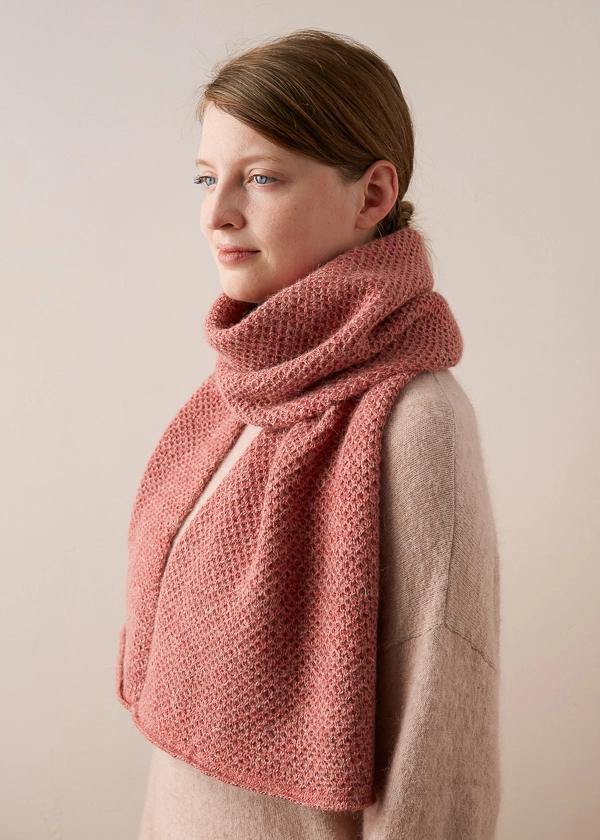

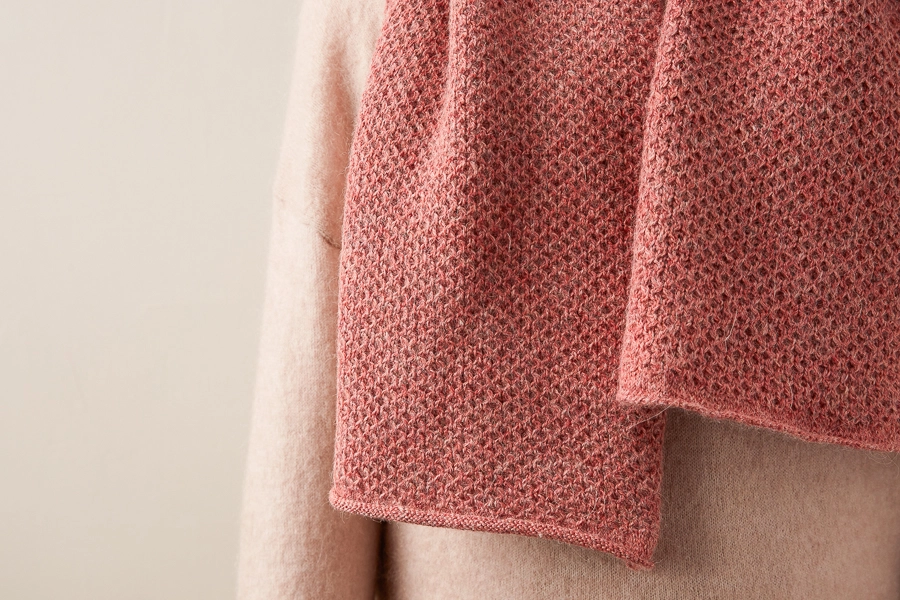
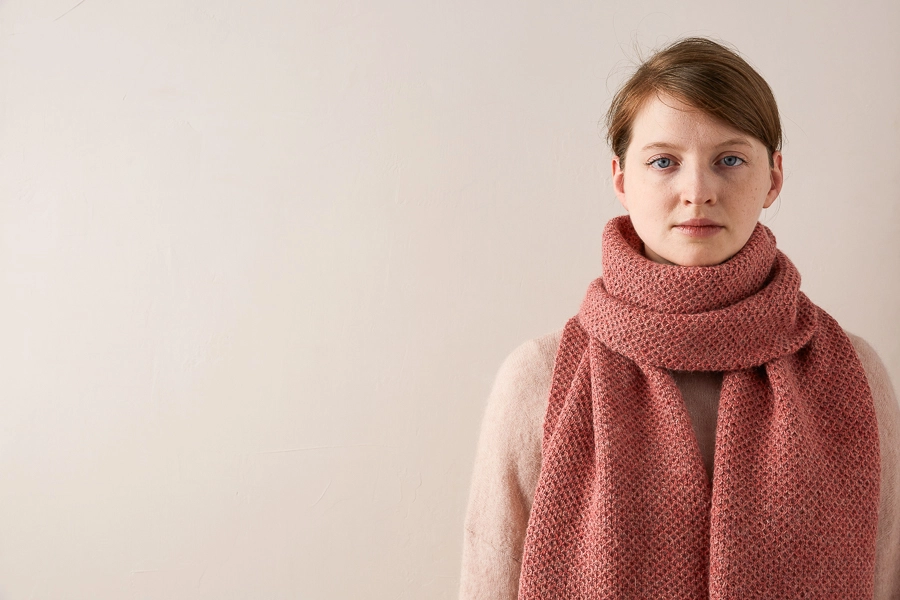
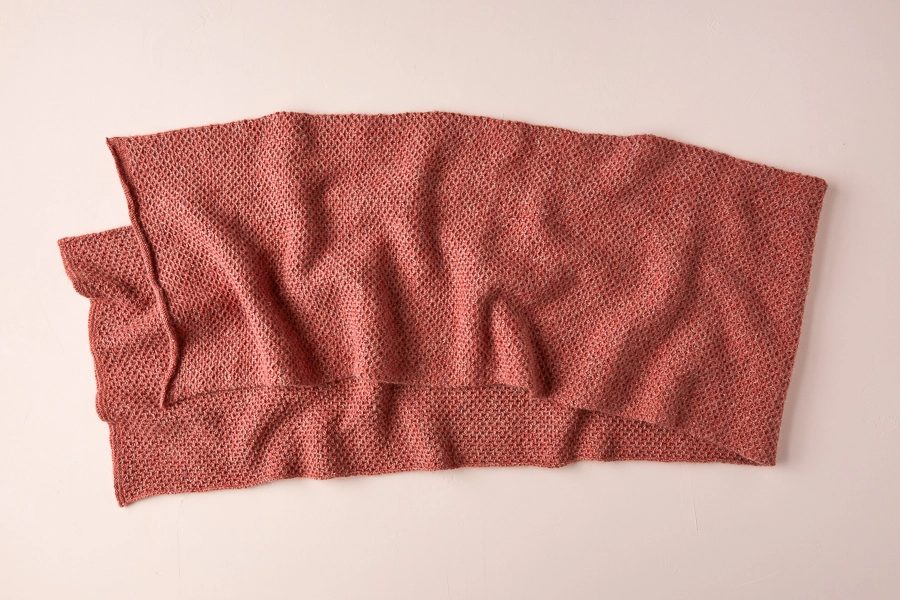
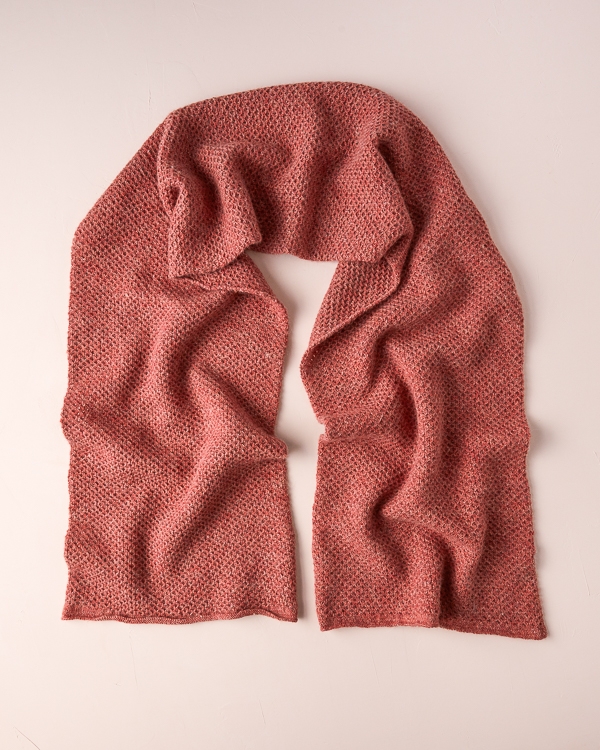
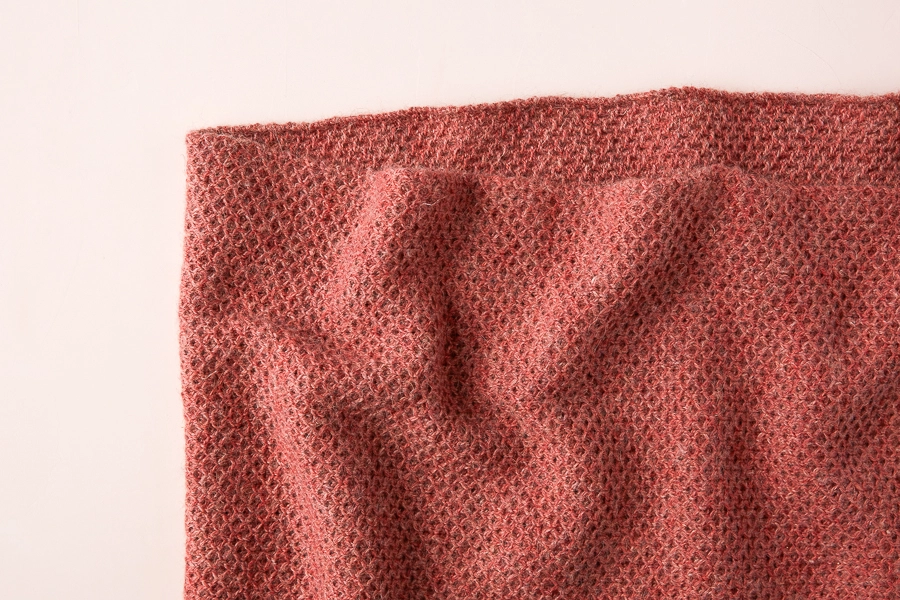
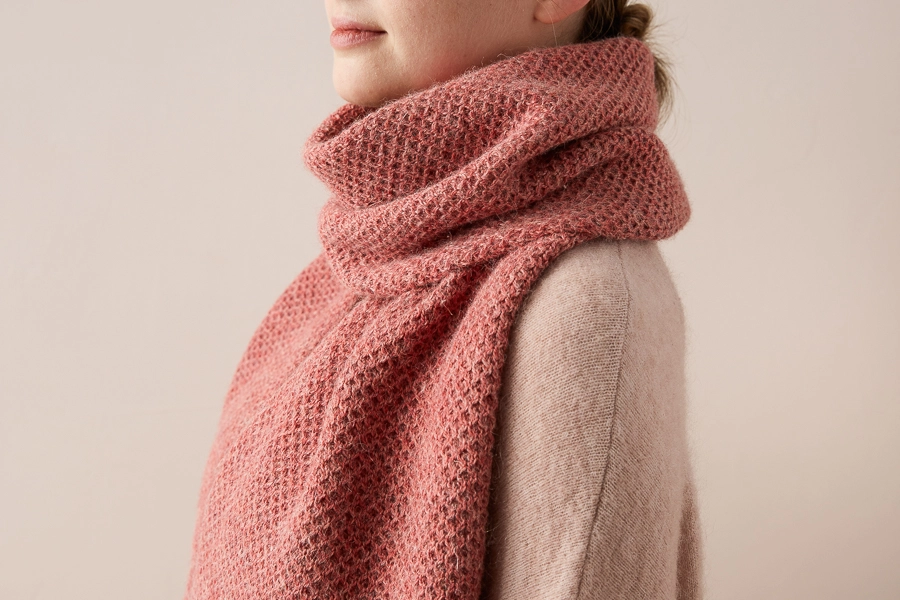


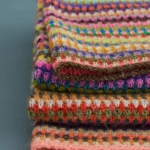
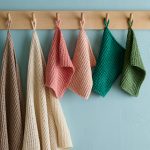
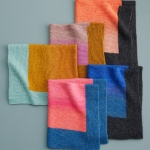
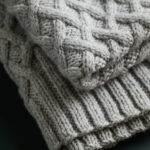
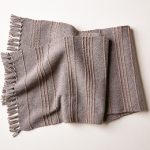
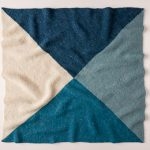
It’s beautiful ?
Your scarf patterns are always lovely in an abundant and simple way. They are beautifully styled and photographed, effectively showing off your lovely yarns. I do wish, however, that there were photos included that show the ‘reverse side’ of the pattern stitches used.
The scarves would have a completely different look if not styled ‘just right’ and shown in a static photo. In real life, scarves often get ‘thrown on’ quickly and less deliberately, and scarf-wearers move!
Hi Mimi,
Thanks for writing in and for the kind words! It is unfortunate that so many of our favorite stitches do have a right side and a wrong side, but we strive to select stitch patterns for our scarves that, even if they look a little different on the wrong side, still have a pleasing or unobtrusive texture. While we do try to put each new project’s best foot forward, so to speak, for the pattern pictures, we also try to give you a peek at the wrong side. In this case, you can see the wrong side in both the third and fourth images in the top bar, and can get an even clearer image of the wrong side in the first, fifth, and seventh pictures for our original Honeycomb Wrap, which utilizes the same stitch pattern in our Good Wool.
Thank you so much for your insights, and we hope you continue to find inspiration in our scarves and wraps!
Best,
Julianna
Hello,
This looks so cozy and soft. I wanted to see if this pattern could be turned into a cowl (maybe the size of the whitecaps cowl on your site). If so, how would one alter the pattern? Thank you!!
Hello Jennie,
Thanks for reaching out! I think this would be lovely as a cowl. I would omit the first and last stitch of every row and knit all wrong side rows. This means you will need to cast on a multiple of 4.
I hope this helps and happy knitting!
-Marilla
Hi Marilla,
Thank you so much for your fast and helpful response. I wanted to follow up to make sure I understand as well as to check to see if my alteration would work and how much yarn to buy.
I understand the multiple of 4 and omitting the first and last stitch. So in row 1 of the honey comb part I would just knit, and row 2 only do the C2B, C2F no knit stitches at beginning and end same with Row 3 and 4.
If I wanted to make a cowl roughly 28” circumference and 16” long, since it is roughly 10 stitches per inch I would cast on 280 stitches. Does this sound right? and then knit until desired length of ~16inches. Would I only require 2 skeins of linen quill yarn for this type of project?
Finally, should I still use smaller needles for the stockinette sections?
Thank you SO much!!
Hi Jennie,
It sounds like you have everything figured out! I would still use smaller needles for the stockinette section, since the stockinette stitch has a wider gauge than the Honeycomb stitch, and this will ensure that the widths of the sections match and the edges don’t ruffle. I do think two skeins would be enough, but you could always purchase the third just in case, and as long as it is unwound, you can return it for store credit.
Best of luck, and please let us know how your cowl turns out!
Julianna
What a great idea–and there would be no purling, yeah!
Hi there,
Do you think that there is enough yarn, and it would work/ turn out well to use this stitch pattern with the cashmere ombre kit?
(Haven’t started the ombre kit yet.)
Thank you,
Michelle
Hello Michelle,
This is such a fantastic Idea! Let us know how it goes and be sure to send us photos of your finished masterpiece!
Happy knitting,
Marilla
Absolutely gorgeous!!
Can this be knit in the round to create a cowl?
Hello Alexis,
Thank you for your interest in our pattern! I don’t see why not, all you will need to do is omit the first and last stitch of every row and knit all of your wrong side rows. You will just need to be sure to cast on a multiple of 4.
Happy knitting!
-Marilla
Beautiful pattern! I too want to turn this into a cowl (my granddaughters preference). In figuring out stitches to cast on, I’m thinking about 400 to make cowl 40” long, providing I get the gauge correct. Unsure of stitch number when changing a pattern.
Thanks for your input.
Elaine
Now to pick a yummy color…..
Hi Elaine,
Thanks for the kind words! You are on the right track with 400 stitches for a 40″ cowl! Just don’t forget to omit the first and last stitch of every row and knit all wrong side rows.
Best of luck and happy knitting!
Julianna
Hello….your patterns for everything are beautiful and I want to make them all! I have only been knitting for a few years and projects like this scarf take me FOREVER to complete! Just wondering how long a project like this takes to complete for experienced knitters? thanks, Lisa
Hi Lisa,
Thanks for reaching out! This is a hard question! Everyone knits at different rates. What might take one knitter just a few weeks to knit might take another several months to complete. Even among the most experienced knitters, times can vary greatly depending on personal speed, comfort with the technique used and a variety of other factors. While we may be confidently able to say that a super bulky project made with just a few skeins can take just a few hours, projects like this are so much larger that confidently giving a range is not possible. For projects like these, I like to set little goals for myself and break them up with something a little different on occasion. I find that, for me, this makes the time spent on them seem a little less and the knit a little more enjoyable!
I hope that this helps!
Cassy
Hi Lisa, I love the project, however my project is rolling up. Any suggestions for how to stop this?
Hi Jess,
Thanks for reaching out. Blocking your work after you finish the scarf will definitely mitigate the tendency for the fabric to roll up! Linen Quill responds great to wet blocking, so I’d recommend using that method (but steam blocking also works). Hope this helps!
All the best,
Lili
I just made the shifting angles scarf using purl soho 100% line weight wool
Would this wool work for the honeycomb pattern?
How many skeins?
What is the advantage of using Linen quill over 100% merino?
Thank you
Hello Ruth,
Thank you for reaching out! You can certainly knit this up in Line Weight. You will need three skeins of line weight to knit up this beautiful scarf.
I hope this helps and happy knitting!
-Marilla
It’s a lovely pattern, but I’m just a couple inches in and realized that the cast on should be a few stitches longer, or a few inches shorter… to create complete honeycomb cells on along the selvedges. As it is written right now, the cell on the right side of the scarf is whole, or round, and the left side of the scarf ends in a half, or open cell. It’s a bummer to realize the pattern isn’t symmetrical after spending this much time on it. Please consider revising to fix this!
Hello Anjuli,
Thank you for your thoughtful feedback! Because each shape must be offset from row to row to create a honeycomb pattern to have each shape be completed on the edge you would have to have every other one stick out further on each side.
I hope this gives you some insight into our reasons for this design.
Happy knitting,
Marilla
This pattern is so beautiful. I have some aran wool and I’m deciding between this and the mini herringbone scarf. Is the herringbone a lot denser than the honeycomb and would either work with aran?
Thanks!
Hi Jilian,
Thanks so much for the kind words and for reaching out! Both stitches create a relatively thick, dense fabric, although the texture is different. If you want to keep things as simple as possible, the Mini Herringbone Scarf is already written for a worsted weight yarn, which is not too far off from an aran weight, so I think you could knit the pattern as written on US 11 needles. However, the Mini Honeycomb Scarf is written for fingering weight yarn, which is quite a jump! It is still doable, but you will have to make a few pattern adjustments. I would suggest knitting a swatch in pattern on US 9 needles to determine your stitches per inch. You can then multiply your stitches per inch by 13 and round to the nearest multiple of 4 plus 2 to determine your cast on number.
I hope that helps!
Julianna
Do you think that I would be able to knit this with two colors? I am attempting to reproduce a scarf similar to one that Anne Shirley wears in the movie (old one not netflix series). thank you
Hello Gillian,
Thank you for reaching out- what a fun project! Were you thinking of adding stripes to the pattern or creating two tones within the pattern itself? I would also check out the two color honeycomb brioche stitch.
Happy knitting!
-Marilla
Hello,
I love this pattern! What is the total yardage used?
I have 2 and a bit skeins in my stash – I’ve weighed my total and I have approximately 1,095m. I’m hoping it’s enough to complete the scarf without adjusting the length.
Cheers,
Sarah
Hello Sarah,
Thank you for reaching out! For our scarf we used approximately 1,400 yards, but you could certainly shorten your scarf or cast on less stitches for a narrower scarf.
Happy knitting!,
Marilla
Hello,
Lovely pattern with a heavenly yarn as usual. I was wondering how to do this in the round. My guess is avoid the first k stitch?
Do you have any tips.
Thanks
Hi Wren,
Thanks for reaching out! To knit this stitch in the round, you will simply need to omit the first and last knit stitch from each row, and work the odd numbered rows as knit rows instead of purl rows.
Happy knitting!
Julianna
I like the idea (in the notes) of not putting the cabled stitch on a holder. I have also done this by knitting into the back loop of the second st (leave it on the left needle) then knit the first stitch, slip both off together for C2F. For C2B knit into the front of the second st, leave it on the left needle, then knit the first st, slip both off. I’m going to try the cowl suggestion, this is lovely! and no purling!
thanks,
Sandy
Hi
Can I make this pattern using thicker yarn and US8 or 9 needles?
Thank you!
Hi Tira,
Thanks for reaching out! Yes, I think this stitch would look lovely worked at a larger scale! I would recommend knitting a gauge swatch in pattern using a needle size appropriate for your yarn to make sure you will be happy with it. You can then multiply your stitches per inch by 13 and round to the nearest multiple of 4 plus 2 to determine how many stitches to cast on.
Happy knitting!
Julianna
Hi there! What sort of blocking do you recommend for this piece and for Linen Quill in general?
Hi Haley,
Great question! I find that Linen Quill responds wonderfully to wet blocking, but you could also steam block it if you prefer.
Happy knitting!
Julianna
Hi there – I have just cast on for this beautiful scarf and the width of 130 stitches is a fair bit wider than I think I will need.
In order to get through it faster I’d like to make it perhaps half the width – 65 stitches cast on.
As I‘ve never altered a pattern though I just wanted to check what the ‘rules’ here are, and if it will make a difference if the number of stitches cast on are odd or even, or if they have to be a multiple of any particular number?
Thank you in advance!
Adrienne
Hi Adrienne!
Thanks for writing in! The Mini Honeycomb Scarf is a worked over a multiple of 4 stitches + 2. That means that if you cast on 66 stitches, you’d be very close to half the width we used for the original.
Happy Knitting!
Cassandra
Hi there! I don’t have a size 1 needle. Is it possible to use a size 2 for the stockinette and then move up to a size 3?
Hi Mira,
Thanks for reaching out! That should probably be fine, but I would suggest starting off with a gauge swatch on the US 2 needle and see how it compares to the original stockinette gauge of the pattern!
Warmly,
Gianna
Thank you!
what does this mean in honeycomb scarf…..
Row 4: K1, *C2F, C2B, repeat from * ?
you say to see note, but do not see any .
thx…..Gerry Sacks
Hi Gerry,
Thanks for reaching out. The abbreviations C2F and C2B are for making the cables! To work a C2F, slip 1 stitch to cable stitch holder and hold in front of work, k1, then k1 from cable stitch holder. To work a C2B, slip 1 stitch to cable stitch holder and hold in back of work, k1, then k1 from cable stitch holder. I hope this helps clarify things!
All the best,
Lili